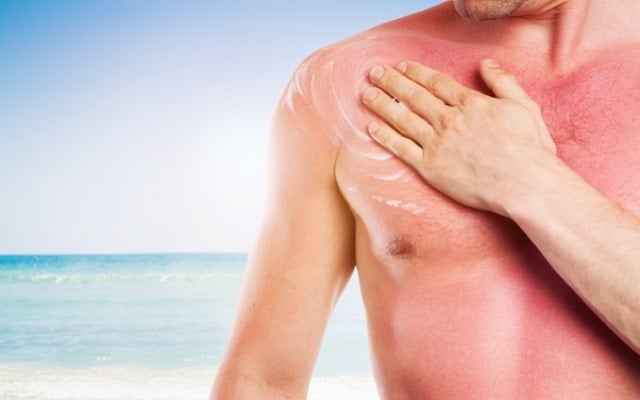After booking your holiday and surviving the endless countdown, it’s all too easy to strap yourself into a sun lounger on the first day and soak up every second of the sun. But this can lead to a burn out. Literally. Too much of the bright stuff could cast a shadow over your holiday.

What are sunstroke and heatstroke?
Is there a difference?
Heatstroke and sunstroke have the same symptoms but are caused by slightly different conditions.
Heatstroke is where the body is no longer able to cool itself down, and your body temperature reaches dangerously high levels. This can happen without going out in the sun, for example if you're stuck in a hot room with no fresh air. Sunstroke is the same but caused by getting too much direct sunlight.
Heatstroke or sunstroke is serious. But if you're feeling a bit unwell after a day in the sun, you might just be suffering heat exhaustion. Heat exhaustion is still serious if you don't treat it, and can progress into heatstroke.
Heat exhaustion symptoms
- Confusion
- Dehydration
- Dark coloured urine (also a common sign of dehydration)
- Feeling dizzy
- Fainting
- Headaches
- Muscle cramps
- Nausea or vomiting
- Pale skin
- Excessive sweating
- Fast heartbeat
How to treat heat exhaustion
Treatment for heat exhaustion is fairly simple, but you should act quickly to make sure things don't get worse, especially if you're concerned about a child or older travel buddy. If you think you or someone you're with has heat exhaustion:
- Get indoors, or to a cool, shaded area.
- Rest and hydrate.
- If possible, drink sports drinks to replace any lost salt and boost your blood sugar.
- Cool the skin - take a shower, use a wet sponge or take off any unnecessary clothes.
Heatstroke symptoms
If you spot any of the following symptoms, it's likely heatstroke. This is much more serious and requires urgent medical attention.
Keep an eye on anyone in your group who shows signs of heat exhaustion. If they develop the symptoms below, call the emergency services.
- Core body temperatures reaches 40 degrees or higher
- Hot, dry, red skin
- Not sweating, despite being hot
- A persistent headache
- Fast heartbeat
- Shallow breathing
- Feeling nauseous and vomiting
- Dizziness and feeling light-headed
- Dilated pupils
- Lips can start to turn blue
- Being in a state of confusion and disorientation, or hallucinating
- Changes in behaviour, including slurred speech
- Muscle weakness and cramps
- Loss of consciousness
Dealing with sunburn
We’re not here to scare you off enjoying some much-needed sun. Sunburn isn't as serious as sunstroke, and not all heat exhaustion turns into heatstroke.
If you have pink patches but feel fine, and you’ve kept hydrated, there are some steps you can take to ensure it doesn’t get worse and your skin heals faster.
- Apply after sun or oil-free moisturiser to the burnt area – using natural products, especially aloe vera, helps soothe irritated skin. Avoid using anything too processed or chemical based as these could irritate the skin more.
- Drink water – even if you’re not thirsty, drinking extra water will keep you hydrated
- If you have blisters, leave them alone – blistering is a sign of second-degree sunburn, so you shouldn’t try to pop them. Let them heal in their own time to help prevent infections through broken skin.
- If you did get sunburn on day 1, make sure you cover up and keep out of the sun until it has healed. Further sun exposure will only damage burnt skin even more.
Tips for staying safe in the sun
You can still enjoy sunnier climes without falling ill, you just need to apply some preventative measures.
- Avoid direct sunlight when it’s at its strongest, between 11am and 3pm.
- Wear loose, light-coloured clothing to keep cool and protect skin from the sun.
- Stay hydrated – it’s recommended that you drink more than the usual 8 glasses of water a day in high temperatures.
- Wear a high SPF sun cream with both UVA and UVB protection.
